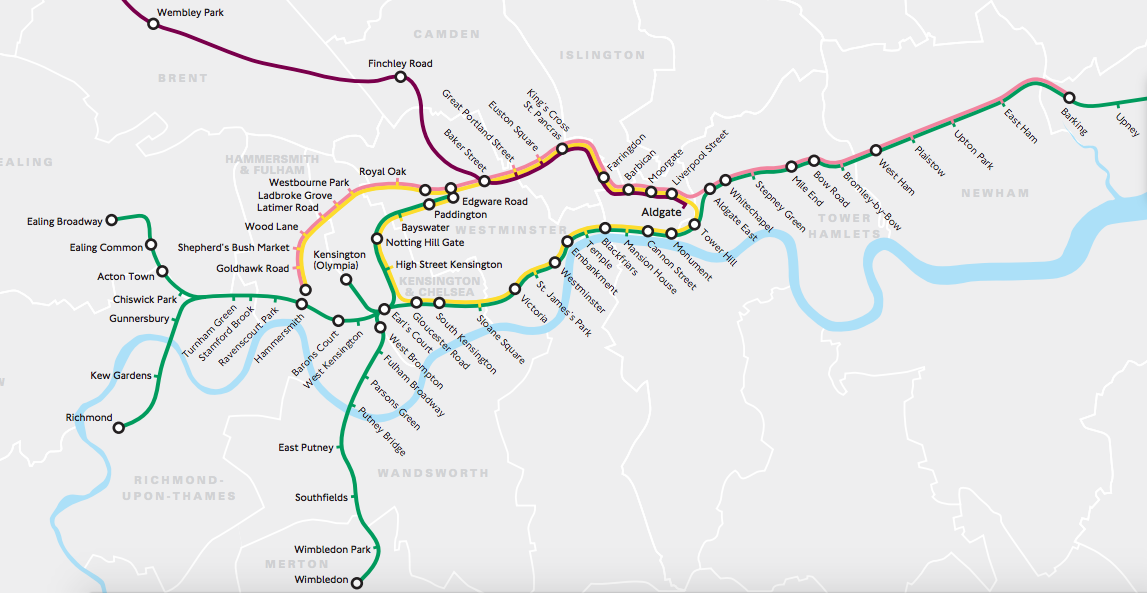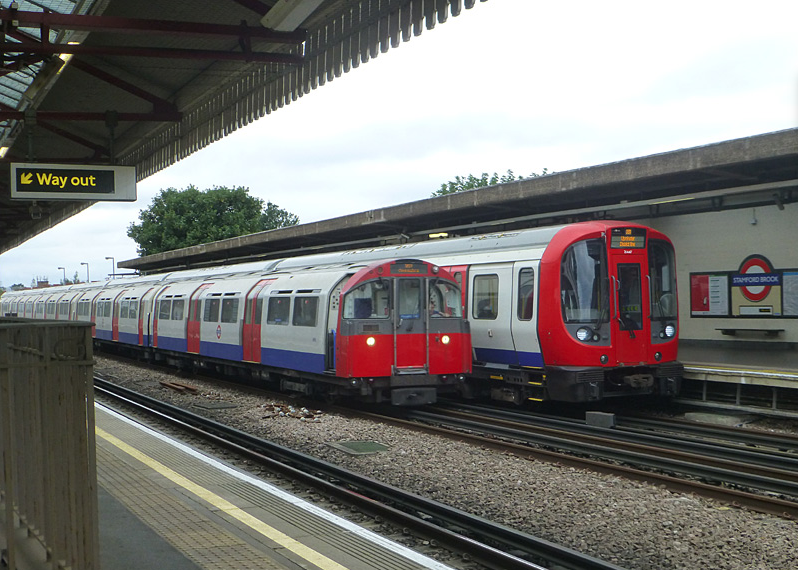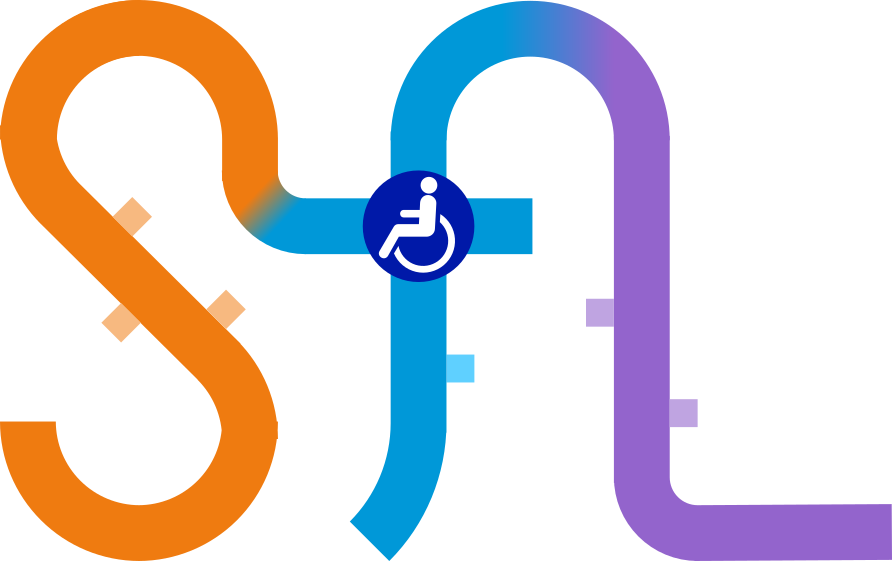Welcome to the third part of my Level Boarding series, focusing on level boarding developments on the famous London Underground, starting with the four sub-surface lines. You can find the introductory post of the series here.
The London Underground, which is the oldest metro network in the world, has its own level boarding challenges that are vastly different from those of the mainline network. Whereas the biggest challenges found on the mainline network centred on a lack of rolling stock (train fleet) standardisation, issues with sharing track with bulky freight, a mismatch between standard platform heights and average train heights, and internal steps on relatively recent trains, the Underground already has a uniform rolling stock along each of its 11 lines, a very high degree of segregation from other services with no freight traffic, and no requirements for standard platform or train heights.
Being a metro system rather than a heavy rail network, the Underground is not bound by the same regulations as the rest of London’s railways, which means that it is free to set its own requirements for platforms and rolling stock to fit the needs of each individual Underground line. For this reason, level boarding has been achievable along long stretches of the network, at times even exceeding the provision of step-free access at some stations, particularly on the Victoria Line.
 Platform hump at Victoria on the Victoria line
Platform hump at Victoria on the Victoria line
With regards to rolling stock accessibility, the Underground, as well as other light rail and metro systems in the UK, is bound by the Rail Vehicle Accessibility (Non-Interoperable Rail System) Regulations 2010 (RVAR). These regulations set standards aimed at improving accessibility and cover areas such as boarding, wheelchair spaces, priority seating, information systems, etc. Importantly, RVAR 2010 states that all pre-1999 rolling stock must be made RVAR-compliant by 2020. This is crucial, as the Underground operates several fleets from the 70’s and early 90’s, and they currently have varying degrees of compliance. In order to discuss level boarding on the Underground, it is thus necessary to consider each line, or group of related lines, separately.
The sub-surface lines, which refer to the Metropolitan (Met), Hammersmith & City (H&C), Circle, and District lines, are the oldest lines in the network and are often grouped together because their services share an extensive amount of track. Since these line were built just below the surface through Central London, it was possible to use full-sized trains, just like on the mainline network. Also, up until recently, level boarding would have been impossible for these four lines.
 Geographic map of the sub-surface lines (click to enlarge)
Geographic map of the sub-surface lines (click to enlarge)
Despite sharing the same infrastructure, in 2010, there were three different types of rolling stock on these lines: A stock (Met line), C stock (Circle, H&C, and part of District line), and D stock trains (majority of District line). Apart from not having accessibility features such as wheelchair spaces, their train floors were also roughly 120 mm higher than the typical sub-surface platform. Fortunately, from 2010 to 2017, all of these trains were replaced by brand new S stock trains.
 Old A stock (left) and new S stock (right) trains at Baker Street. Notice the significantly lower train floor (source)
Old A stock (left) and new S stock (right) trains at Baker Street. Notice the significantly lower train floor (source)
These train not only feature wheelchair spaces, wide corridors, and the ability to walk through the train coaches, but they also have low floors that are level with the majority of the platforms. Upon the full replacement of the old fleets, many important step-free stations, such as Blackfriars and Earl’s Court, instantly gained level boarding as well. Also, platform humps were installed at stations with lower platform heights, such as Hammersmith (District) and Southfields.

Interior of an S stock train, with plenty of space to move within the train (source)
However, one major existing problem is the curved platforms at some step-free stations, almost exclusively found in Central London. These are Paddington (H&C), Farringdon, Tower Hill, Cannon Street, and Westminster (very soon to be joined by Victoria). At these stations, the platform and train floor are fully level, but the gap between them ranges considerably along the platform, such that there technically IS level boarding, but only on some sections of the platform. For this reason, all of these stations have small ramps available, and this is also why these stations are marked with cyan-coloured wheelchair blobs on my SfL map.
 Variable gap size at Tower Hill. The first two doors would require ramps but the third one has level boarding
Variable gap size at Tower Hill. The first two doors would require ramps but the third one has level boarding
 Variable gap symbols at Cannon Street and Tower Hill
Variable gap symbols at Cannon Street and Tower Hill
I do not know of any current push to add gap fillers to provide more consistent level access along these platforms, but I believe that TfL could potentially fix the situation by explicitly marking an area at these stations where the gap is minimal and by then marking that relative spot at the remaining step-free stations so that passengers can confidently know which door to use for a specific station. The challenge would then be how to display all of this information coherently.
Overall, counting the curved stations as level, almost every station with some form of step-free access to street level on the sub-surface lines has level boarding, with only 5 out of a total of 40 stations requiring ramps. In 4 of these cases (Acton Town, Ruislip, Hillingdon, and Uxbridge), there is a step onto the train because the platforms are shared with the Piccadilly line, which uses significantly smaller “Deep Tube” trains and requires a lower platform. Unless there is a way to safely raise part of the platform while dipping another, it is not likely that these stations will ever have level boarding for either service as long as both types of trains are running.
 Size difference between sub-surface (right) and Deep Tube (left) trains (source)
Size difference between sub-surface (right) and Deep Tube (left) trains (source)
The final station with no level boarding is Chesham, which is also the station located furthest away from Central London and is actually in Buckinghamshire. This station is a bit of a questionable one, as I have personally never been to it and cannot confirm its status. From what I have gathered, there is a significant curve on the south part of the platform, which does create large gaps. However, whether there are sections, primarily towards the north, where there is level boarding, or whether the platform is actually level with the train, is something that I would need to check personally. If anyone has any information about Chesham, please let me know.
 S stock at the northern end of Chesham. It looks level here but I am not sure about the gap (source)
S stock at the northern end of Chesham. It looks level here but I am not sure about the gap (source)
In conclusion, the sub-surface network has been a relative success in adopting level boarding in a very short time. Barring the examples above, it is almost certain that all future step-free stations on these lines, such Whitechapel and South Kensington, will offer level boarding thanks to the new trains.
The next post will deal with the remaining 7 Underground lines, collectively known as the “Deep Tube” lines. Unlike the positive current level boarding situation on the sub-surface lines, Deep Tube lines have a more varied success rate, ranging from the Victoria line (with excessive platform hump use) to the Bakerloo line (with non-compliant trains and no level boarding).


2 comments